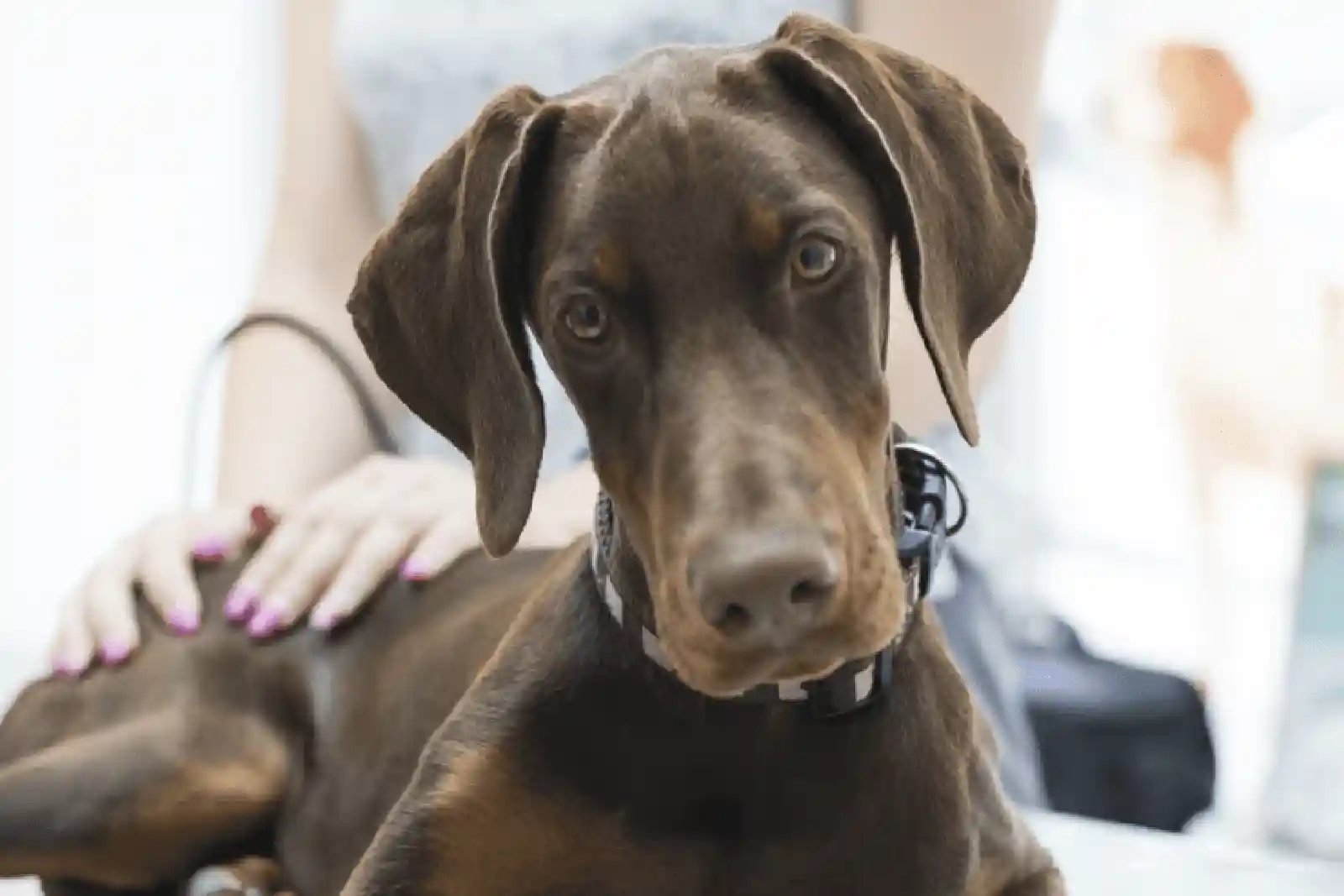Dog Head Shaking: Causes and What to Do
Dog head shaking can mean different things to different people. Let’s begin by differentiating between a dog intentionally shaking its head from side to side and a dog’s head shaking involuntarily.

Dog Head Shaking as a Voluntary Action
You may notice your dog shaking its head from side to side after a satisfying ear scratch, a long nap, a nice stretch, a fun swim, or a not so fun bath. If your dog is shaking its head deliberately, this is a completely natural behavior, usually practiced in order to relieve some type of discomfort.

Two general types of discomfort that can lead to a dog shaking its head are:
EAR DISCOMFORT
Dogs most often shake their heads to relieve ear discomfort, like itching, or to clear the ear canal of foreign substances, like dirt, water, or bugs.
However, if your dog’s deliberate head shaking becomes incessant, something is wrong. Your dog most likely has an allergy or an ear infection and definitely needs medical attention.
MOUTH DISCOMFORT
It is also possible for a dog to shake its head to relieve its mouth of discomfort. On numerous occasions, I’ve witnessed my own dog shaking her head from side to side after inhaling week-old whatever, covered in ants, off the sidewalk or after being given “yucky” medicine.
As another more serious example, dogs that have come into contact with poisonous toads may shake their heads to rid their mouths of the toxin. If you notice your dog shaking its head from side to side with any of the following symptoms, get to an animal hospital right away:
- Profuse foamy salivation
- Pawing at the mouth
- Retching
- Bright red oral mucous membranes
Dog Head Shaking as an Involuntary Action
Is your dog’s head shaking uncontrollably? Does it look more like trembling or tremors? Or perhaps it’s bobbing like a bobblehead? Or twitching and jerking? If your dog’s head is shaking involuntarily, the search for answers should be directed inward to the central nervous system.
Three possible causes of involuntary dog head shaking include:
CANINE DISTEMPER VIRUS
For unvaccinated dogs, canine distemper virus is a highly contagious and often fatal virus that attacks the respiratory, gastrointestinal, and nervous systems causing severe illness.
Myoclonus is a rhythmic jerking of a single muscle or muscle group and a common sign of canine distemper virus, involving mostly the muscles of the limbs or head.
Some signs of distemper in order of progression are:
- Thick yellow nasal and ocular discharge and coughing
- Fever and lethargy
- Reduced appetite, diarrhea, vomiting
- Head tilt and circling
- Muscle twitches, convulsions with jaw chewing movements, and seizures
Canine distemper virus spreads as easily as the common cold in humans, and much like the common cold, there is no cure. Treatment is supportive, primarily aimed at preventing dehydration and secondary infection. The symptoms, duration, and survival rate largely depend on the strength of the dog’s immune system.
CEREBELLAR HYPOPLASIA
The brain’s cerebellum is responsible for controlling motor skills. Basically a canine version of cerebral palsy, cerebellar hypoplasia is a condition that causes parts of the cerebellum to not completely develop.
Symptoms of cerebellar hypoplasia can range from mild to severe:
- Head bobbing
- Tremors
- Wide stance
- Dysmetria (over- or under- reaching or stepping)
- Ataxia (incoordination)
- Falling over
The origin can be either infectious or genetic, but it is always congenital (present at birth) with symptoms becoming evident when puppies attempt to walk, around six weeks old.
Cerebellar hypoplasia can be hereditary in some breeds:
- Airedales
- Chow Chows
- Boston Terriers
- Bull Terriers
- Irish Setters
There is no cure or treatment for cerebellar hypoplasia, but affected dogs do not worsen over time, and instead, have normal lifespans. They are not painful and can actually live a quality life with the right family!
IDIOPATHIC HEAD TREMORS
Idiopathic head tremors are a series of horizontal “no,” vertical “yes,” or rotational “bobble head” gestures.
It can be tricky to identify the different types of dog head shaking, but some additional characteristics of idiopathic head tremors are that they:
- Only occur in the head
- Happen while the dog is at rest
- Generally last less than five minutes
- Do not seem to upset the dog
- Can often be stopped by distracting the dog
Idiopathic head tremors can happen to any dog, but are most often seen in young dogs under three years old and in certain breeds like:
- Dobermans
- Bulldogs
- French Bulldogs
- Boxers
- Labrador Retrievers
The cause of idiopathic head tremors is unknown, but thankfully, the condition usually resolves itself as the dog grows older.
What to Do if You’re Concerned about Dog Head Shaking
If your dog is persistently shaking its head from side to side, or if your dog’s head is shaking uncontrollably, please seek professional medical help. Many neurological conditions may share similar symptoms, but have very different treatment plans and outcomes. Southeast Veterinary Neurology is open 365 days a year to get to the bottom of your dog head shaking concerns! Contact our Miami, Boynton Beach, Jupiter, or Virginia Beach locations to schedule an appointment for your pet today.